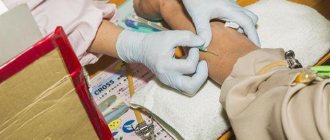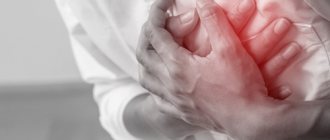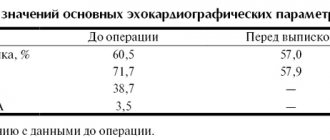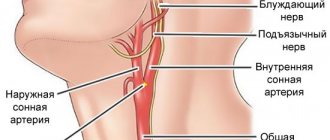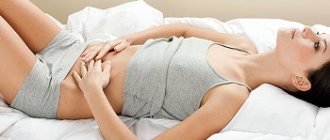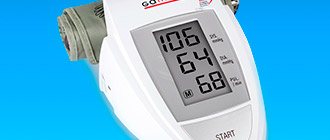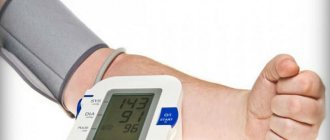There is a certain category of diseases in which the patient faces problems eating. This is due to impaired body functions. With a normal diet, you need to chew solid food thoroughly and swallow. But not all patients can do this. In such cases, doctors prescribe tube feeding - feeding the patient through a medical tube system. The patient receives a balanced diet, the menu is calculated based on the general condition of the body and the diagnosis. While taking food, the patient does not make chewing or swallowing movements. With this feeding, food enters the gastrointestinal tract in a state suitable for digestion.
Indications for tube feeding
Tube feeding is a way to provide nutrition to a patient with impaired functional state of the body. With the help of the system, the patient receives an amount of food sufficient for the normal functioning of other systems and organs. For some diagnoses, tube feeding for bedridden patients is the only method of maintaining vital functions.
Indications for the purpose of probe installation:
- rehabilitation after a stroke. One of the consequences of a stroke is impaired swallowing function (partial or complete);
- head and neck injuries with swelling of the larynx and esophagus. Ordinary food, even thoroughly chewed, does not pass down the swollen throat. Tube feeding becomes the only method of obtaining nutrients;
- being in a coma, unconscious. Patients in these conditions need to receive nutrition to maintain the vital functions of all systems and organs;
- mental disorders leading to food refusal. One example is a severe form of anorexia;
- Alzheimer's disease, multiple sclerosis, Parkinson's disease. One of the manifestations of such conditions is patient refusal to eat or impaired swallowing function;
- surgical operations on the larynx and esophagus. During the rehabilitation period after such operations, nutrition in the usual way is excluded.
In some cases, a tube system is installed in bedridden patients to administer medications taken orally. Doctors resort to this method of treatment when diagnosing gastric decompression.
What is tube feeding?
Tube feeding is used when the gastrointestinal tract is functioning, when the functions of chewing and swallowing are impaired, i.e., normal oral nutrition is impossible.
A thin hollow tube (probe) is inserted through the nose into the stomach or intestines, through which nutrients will be delivered.
The probe can only be inserted by a medical professional. Tube feeding guarantees safety: the risk of choking if swallowed is minimized.
There are various compositions of mixtures for therapeutic nutrition. Due to their taste, they can be used not only as tube feeding, they can also be consumed as regular oral nutrition.
- Fiber- type mixtures with dietary fiber normalize and maintain the natural state of intestinal microflora.
- Energy type mixtures - for patients with high protein and energy needs.
- Mixtures such as Energy Fiber - for patients with high protein and energy needs, have a beneficial effect on the functioning of the gastrointestinal tract.
- Mixtures like Diabet Liquid are a special composition for patients with diabetes.
Features of tube feeding
Prescribing tube feeding requires compliance with certain rules:
- compliance with temperature conditions. Food introduced through the tube should be warm (38-39 degrees). Hot foods can cause burns to the larynx and esophagus. Cold food is difficult to digest, which will lead to a worsening of the condition;
- compliance with food consistency requirements. It must be liquid;
- compliance with the principle of gradualism. When prescribing feeding through a tube, the first meals (2-3 times) should not exceed 100 mg in volume;
- If food is prepared at home, each dish must be prepared separately.
The menu for feeding through a tube depends on the specific diagnosis. The feeding regimen and meals suitable for the patient are prescribed by the attending physician. Most often it is recommended for tube feeding of bedridden patients:
- broths based on boiled fish, meat, poultry;
- kefir;
- liquid milk porridge from semolina;
- boiled fish, meat, poultry, pureed through a fine sieve, with the addition of broth in which the products were cooked.
In addition to regular products, the doctor may prescribe vitamin mixtures and other formulations produced in industrial conditions and intended for feeding through a tube.
Supplemental oral nutrition
Supplemental oral nutrition (supplementary feeding) is used to provide additional nutrients and energy to the body. The patient independently consumes the mixture in small sips. This method increases absorption and improves tolerance of therapeutic nutrition.
Benefits of a supplemental oral nutrition drink
This is a specialized high-calorie liquid mixture that is completely balanced in all nutrients.
- The composition is optimal in terms of content and ratio of proteins, fats and carbohydrates
- Contains daily requirement of vitamins and microelements
- Contains omega-3 fatty acids from fish oil, essential fatty acids
- Blends containing and not containing dietary fiber
- Small volume - after a stroke, eating small portions is recommended
- Sterility - in patients with reduced immunity will help prevent the development of nutrition-related infectious complications
- Pleasant taste and good tolerance
How does tube feeding work?
The daily tube feeding regimen includes 3 to 5 meals. A sterile syringe is used for each feeding. Reuse of the syringe is not allowed.
Tube feeding is done as follows:
- the bedridden patient is raised to a semi-sitting position;
- the end of the probe with the funnel, located outside, is lowered below the neck, clamped with the included clamp;
- A syringe with a nutrient mixture is attached to the funnel. The funnel with the syringe rises 50 centimeters above the level of the stomach. The clamp is removed;
- The mixture is slowly squeezed out of the syringe into the funnel. The rate of food administration is no more than 150 mg per 5 minutes;
- After introducing food, another syringe filled with water is attached to the probe. The amount of water is from 30 to 50 ml. Water flushes the system, freeing the tube from food debris;
- A clamp is attached to the probe, the end of the probe is lowered down. A plug is installed on it.
One probe system can be used for up to 3 weeks. After this, it is removed, and doctors install a new system.
Installation procedure
Manipulations can be carried out in a hospital setting or at home, but they should only be performed by a specialist. It is advisable that the patient is conscious at the same time, otherwise the probe tube may get into the respiratory tract. To prevent this, the patient makes a swallowing movement during passage. If this is not possible, the doctor guides the device into the patient's throat with two fingers.
Benefits of rehabilitation
Feeding through a tube is a complex procedure, during which you must strictly follow the rules, monitor sterility and hygiene. It is very difficult for an ordinary person to do everything correctly. Our rehabilitation center employs experienced professionals who are well acquainted with the features of tube feeding. Health workers will monitor the feeding schedule and follow all doctor’s recommendations regarding the menu and amount of food.
Caring for a bedridden patient is a task with which relatives of patients often turn to us. Our employees pay special attention to compliance with all medical recommendations. In addition to nutrition, our responsibilities include:
- 24-hour care;
- prevention, treatment of bedsores;
- physiotherapy;
- massage.
The center has its own psychologists and speech therapists. These doctors help patients of all ages undergoing rehabilitation.
Caring for a patient after a stroke - highlights
Which professionals should monitor and assist in the care of these patients?
Neurologist, medical rehabilitation specialists (physical therapy instructor, ergotherapy specialist, massage therapist). In case of speech disorders, the help of a speech therapist is necessary. The participation of a nutritionist is desirable. The help of a psychologist or psychotherapist is necessary for both the patient and relatives. If there are concomitant diseases, specialists in this profile should also be involved. But the most important specialist is the person caring for the patient. If you have the opportunity to hire one, that's great. If you care for yourself, you will need to undergo special training or find textbooks on care. The necessary information can be found on the Internet.
How to prepare a house or apartment for the transfer of a patient?
The room must be cleared of unnecessary furniture as much as possible, hang curtains on the windows, and make sure that the room is well ventilated. If an air conditioner is installed, you must ensure that the bed is located outside the main air flow. Modern functional beds have the ability to adjust and give various positions (including for repositioning the patient, giving a semi-sitting position, installing a feeding table). Electric drive and remote control make cleaning easier. Rollers and restraints made of special materials allow you to create comfortable positions for the patient, in which he can remain for a long time. It is convenient if there are special devices for sitting down and standing up (an arc with a cord and a comfortable handle). Not far from the bed, consider a place to store care items, linen and hygiene products. Be sure to install a “panic button” for calling.
The bathroom should have grab bars for the toilet and a device for washing. Equip the sink with special handrails, and all hygiene items should be located no further than 30 cm from it.
It is better to use a shower cabin rather than a bath. You can replace the bathtub with a special one with a “door” for easier access. Or equip the bath with handrails, steps, inserted seats or chairs. In any case, washing should only be done through joint efforts.
The kitchen should have devices for opening cans, cutlery with large and voluminous handles - these are easier to hold. You can purchase a special set with adapted handles. Cups and plates must have stable bases. For drinking, you can use sippy cups with spouts or soft straws. It is advisable to replace the faucet in the sink with a combined faucet-hose. Detergents should be easy to open and close.
In the apartment, you need to get rid of thresholds, or reduce their height as much as possible. Remove rugs and runners. Apply special “anti-slip” strips to the slippery surface. Attach railings to the walls for support and movement support.
How to transport a patient from the clinic home?
Special transport with the ability to transport the patient in a horizontal or semi-sitting position, using devices to facilitate loading and unloading the patient on a wheelchair or gurney. If there is no elevator, you will need the help of several people to get to the floor.
What physiological indicators need to be monitored?
These indicators are determined by the attending physician. The patient himself or his relatives must measure blood pressure, count heart rate, measure temperature, and monitor the condition of the skin. If a stroke is accompanied by an abnormal heart rhythm, it is necessary to monitor the regularity of the patient's rhythm. If you have diabetes, you need to monitor your sugar levels using a glucometer. Often, cerebral circulatory disorders are accompanied by urination disorders, especially in bedridden patients. It is necessary to empty the bladder regularly using urine bags or special disposable catheters.
What complications can there be?
The development of bedsores, congestive pneumonia, the development of contractures (stiffness in the joint due to immobilization), the formation of blood clots in the veins of the lower limb, which is fraught with the occurrence of pulmonary embolism (pulmonary embolism). A depressive state significantly worsens the course of the disease. The doctor will correct it with appropriate medications.
Restoring limb mobility
You will have to go through the period of formation of the patient’s personality again: he will learn to speak, walk and work with his hands before your eyes.
Be patient and don't give up: physical therapy works wonders.
Damaged muscles need to be warmed up: with massage and attempts at action. You can squeeze a ball with your hands or try to hold a pen or pencil. Ask the patient to take the object from your hands, and one day he will do it.
The speech therapist works with the muscles of the tongue, conducts classes to warm up the speech apparatus with simple movements and exercises.
What is important to consider when feeding
A bed with a raised headrest will facilitate the process of eating and minimize the ingestion of chewed food and accidental ingestion of crumbs into the respiratory system. In the absence of special equipment, place a cushion from a blanket or a tightly stuffed pillow.
Create a diet taking into account the patient’s preferences; it should contain the optimal amount of vitamins, minerals, proteins, fats, and carbohydrates. It is advisable to serve warm, chopped. During tube feeding, monitor the tube and the patient's well-being.
The intestines and their emptying require special attention:
- Soft food - soft stool
- If you have constipation, seek medical advice and they will give you an enema.
- An accessible method is microenemas from a pharmacy: a special substance is injected into the anus and irritates its walls, followed by defecation without gastric lavage.
Do not feed the patient against his wishes - pieces of food can enter the lungs and cause aspiration pneumonia.
If the patient can handle cutlery himself, make this process easier for him: buy forks and spoons with rubberized handles.
Massage against bedsores: how to do it
Bedsores are terrible in their consequences and unpleasant in their presence. I wouldn’t want to lose a loved one due to improper care: follow the recommendations and enjoy the positive results!
- Start by lightly stroking your dry palms over your dry back area to warm the skin. Switch to tapping your shoulder blades and the area between them to prevent lung problems.
- Turn the patient over on his side and lightly stroke his back and ribs.
- We stroke the buttocks and legs, then with light kneading movements we pull our hands from the foot to the sacrum along the flow of lymph. This is how we help clogged veins perform their function.
- At the end of the massage, we proceed to the problem areas on which the patient rests while lying down: gradually we translate the stroking into remembering and light rubbing. Do not overdo it so as not to damage delicate skin.
- Legs can be massaged with preventive ointments for varicose veins. They strengthen the vascular wall.
- To prevent thrombosis of the extremities, use compression stockings and tights, as well as bandaging.
- When massaging a specific area, the rest of the body should be covered with a blanket or sheet to prevent the person from getting cold.
- Massage can be combined with exercise: invite the patient to try to squeeze your hand. Raise and lower, bend and extend your limbs to improve blood flow.
What is important to know about restorative gymnastics:
- Make every movement as carefully as possible; you must not cause pain or discomfort to a person who has suffered a stroke;
- You need to combine exercises with breathing exercises;
- Over time, teach the patient to independently perform basic movements;
- Follow the sequence of all recovery stages.
Anyone who has suffered a stroke will literally have to learn many basic things all over again, so a lot of patience and attention will be required from his relatives.
Feeding stroke patients
Eating is a rather difficult task for an elderly person who has suffered a stroke. It often happens that simple body functions such as salivation, chewing reflex, and swallowing are lost. After the doctor’s conclusion, you can start feeding your relative liquid and soft foods. For convenience, you can use a blender, with which the finished products will be processed into puree.
In case of uncontrolled salivation, it is necessary to tie a towel on the patient and treat the corners of the lips with a rich cream.
It is important to serve food from the healthy side of the mouth and ensure that the patient chews and swallows it. Products should have a soft consistency and an optimal temperature (not too hot, not too cold). After eating, the patient is not recommended to move (sit down, perform gymnastics) for an hour.
Help with dressing and washing
In order for an elderly person to wash himself, it is necessary to provide him with assistance. To begin with, it is important to sit the patient in a position that is comfortable for him. Then you need to remove possible obstacles and close the windows so that there are no drafts. If a paralyzed patient washes while sitting on a chair, you need to use rubber supports under the legs of the furniture, but it is most convenient to perform water procedures using a portable shower. After every meal, you need to brush your teeth and use an electric razor to shave.
An important rule for dressing a patient: first, clothes are put on the paralyzed side. When undressing the patient, first release the moving part.
It is not recommended to put things on over your head (it is better to choose clothes with buttons or zippers). It is also important to touch the affected parts of the body as carefully and carefully as possible.
You need to know this
Useful rules:
- Monitor the integrity of the skin, prevent dermatitis and bedsores;
- Maintain an optimal cool indoor climate;
- Monitor the patient's body temperature;
- Strictly adhere to the recommendations for feeding the patient, this applies to calorie content, consistency and temperature of food;
- Find something to do for a patient who has suffered a stroke, and prevent him from becoming depressed.
When to call a doctor:
- With sudden increases in temperature;
- For severe pain in paralyzed parts;
- When bedsores or swelling appear;
- If the patient's health worsens.
Not everyone has the opportunity to equip a home and provide appropriate conditions for the rehabilitation of a person who has suffered a stroke. To help an elderly person cope with the condition and recover as quickly as possible, you can contact nursing homes with care for the elderly after a stroke, “Caring for Loved Ones.” This is the right decision that will help maintain the health of a loved one and provide him with proper care, without rebuilding your own life to suit the needs of the patient.
